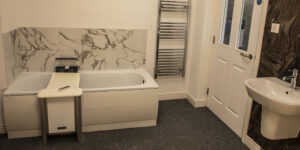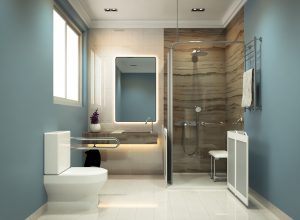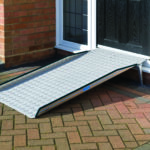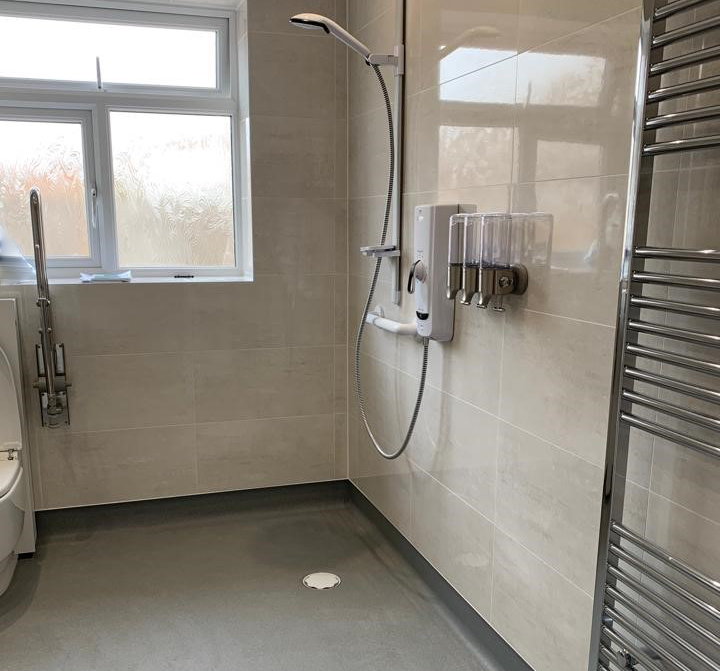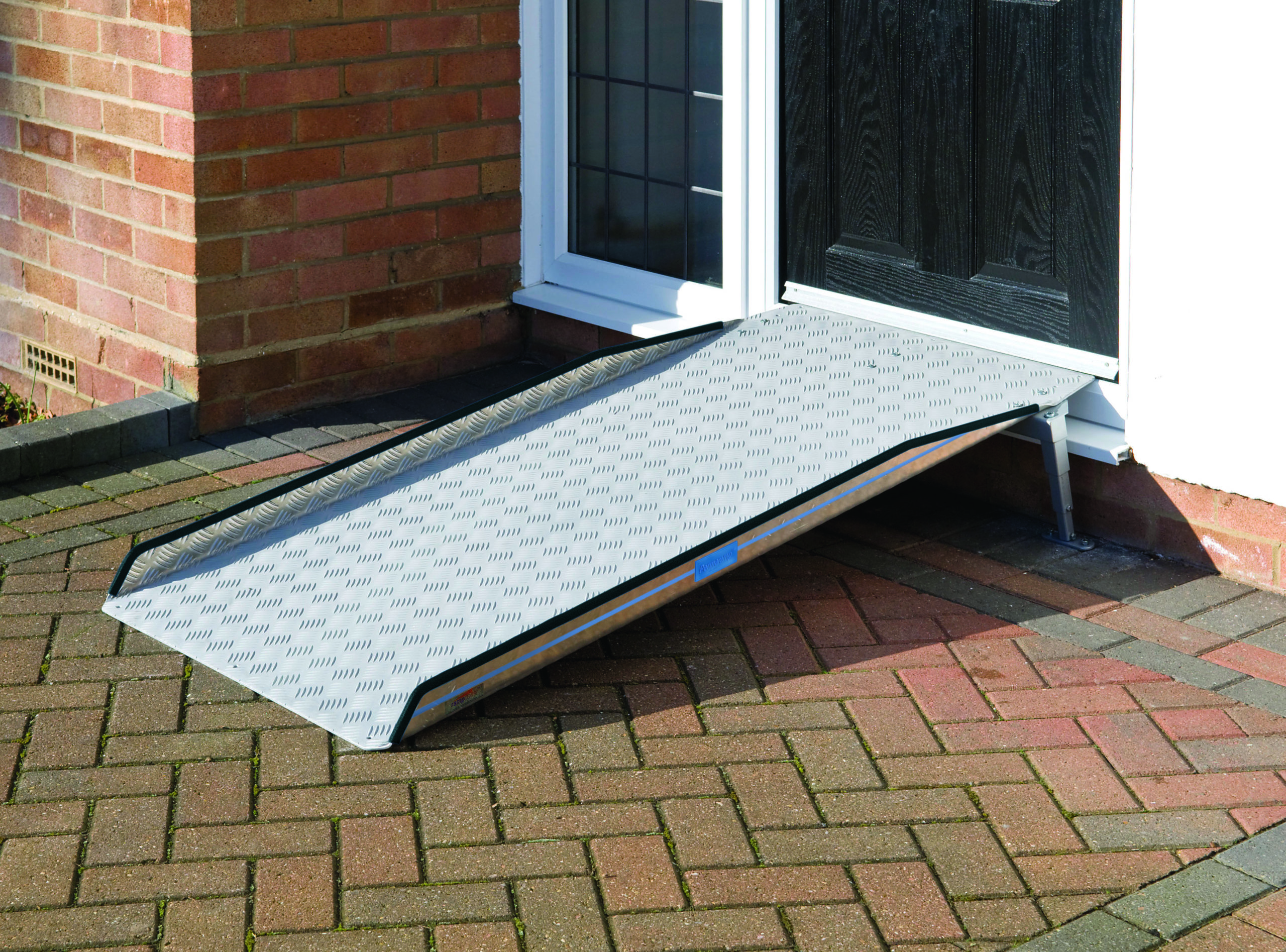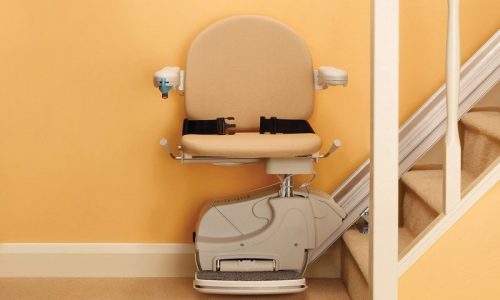Wet rooms are fantastic bathroom solutions, especially for disabled individuals or those with mobility issues. They provide ridge-free level access throughout, making your bathing space easier to navigate and use.
Additionally, wet rooms are easier to clean as they don’t have the seals and crevices where bacteria can accumulate, like with a typical shower cubicle. However, regular cleaning and maintenance are still essential to prevent water marks, soap scum, and grime build-up caused by constant water exposure and condensation. This guide will walk you through the steps to effectively clean your wet room floor.
Jump straight to…
Cleaning Tips for Wet Room Floors
Using a Mop
When it comes to mopping your wet room floor, a few simple techniques can make a noticeable difference in keeping it clean. First, always ensure you’re using a clean mop head — if it’s already dirty, you’ll only end up spreading grime around. It’s also a good idea to rinse your mop frequently while you’re cleaning, especially if you have a large area to cover. Microfibre cloths can also be very effective for wiping down surfaces and drying the floor, leaving it free from streaks or water marks.
If you’re short on time, a quick wipe with a damp cloth can freshen up the floor without the need for a full mop. However, for a deeper clean, use a pH-neutral floor cleaner suitable for your flooring type and work in small sections to ensure you don’t miss any areas.
Cleaning the Shower Screen
If your wet room has a glass shower screen, you’ll know how quickly water marks and soap scum can develop. To keep it looking clean and clear, get into the habit of removing excess water with a squeegee after each shower. This small task can make a big difference in reducing water spots and build-up.
Once a week, take a bit of time to clean the screen more thoroughly. Spray a bathroom cleaner onto the glass and wipe it down with a microfibre cloth. If you notice grime around the grout or joints where the screen meets the wall, use a grout cleaner and a small brush to scrub away any dirt. For a polished, streak-free finish, a glass cleaner and microfibre cloth will leave your screen looking like new.

Drains and Grates
The drain in your wet room plays a vital role in ensuring water flows away quickly, but it can easily become clogged with hair, soap residue, and grime. To prevent build-up, it’s a good idea to give the drain channel a regular clean. One of the easiest and most natural methods is to pour a mixture of vinegar and baking soda down the drain. Let it sit and fizz for a few minutes before scrubbing around the grate with a brush. Finish by rinsing it thoroughly with hot water.
This simple routine helps prevent unpleasant odours and keeps water draining away efficiently.
Preventing Mineral Build-Up
One of the most effective ways to keep your wet room floor looking its best is by preventing water marks and mineral build-up. The best tool for the job is a squeegee. After every shower, take a minute to use the squeegee across the floor and any glass surfaces to remove excess water. Doing this regularly helps prevent hard water stains and streaks from forming.
It’s a small effort that makes a noticeable difference in keeping your wet room looking clean and fresh for longer.
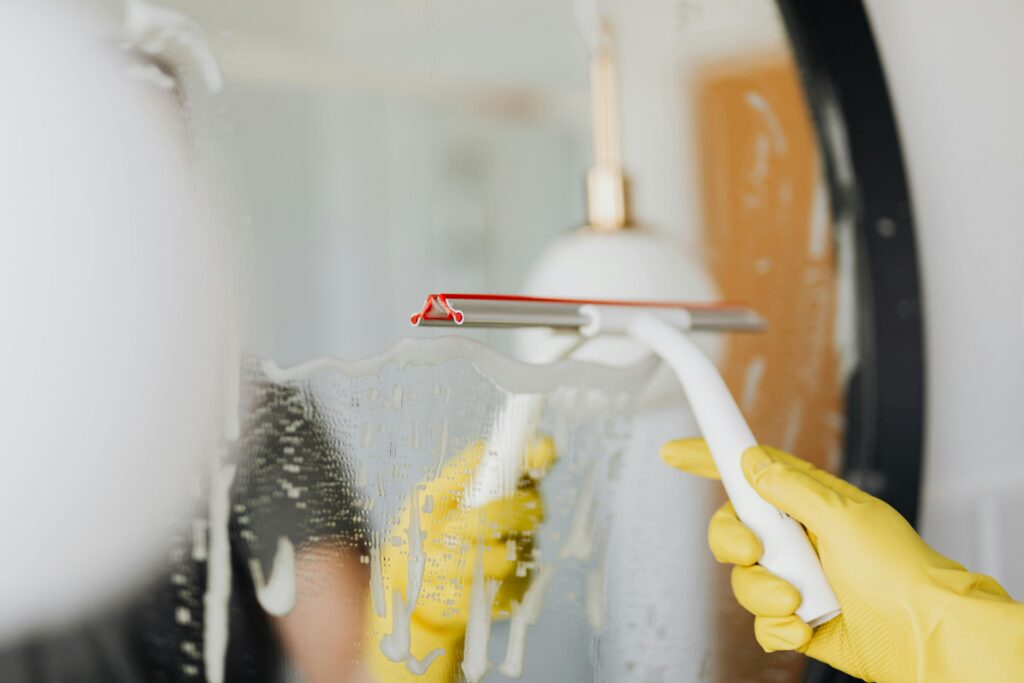
Deep Dirt and Stains
For deeper dirt or a stained wet room floor, try the following:
- Mix vinegar and baking soda to create a natural cleaning paste. Apply it to stained areas to deodorise and disinfect.
- For tough grime, consider using a pressure washer if accessible.
Different Types of Wet Room Flooring and How to Clean Them
Tiled Floors
Tiled wet room floors are durable but require specific care to maintain their appearance. Always use a pH-neutral cleaner to avoid damaging the grout or discolouring the tiles. Pay particular attention to the grout lines, as grime can build up quickly in these areas. Use a stiff brush and a dedicated grout cleaner to keep them looking fresh.
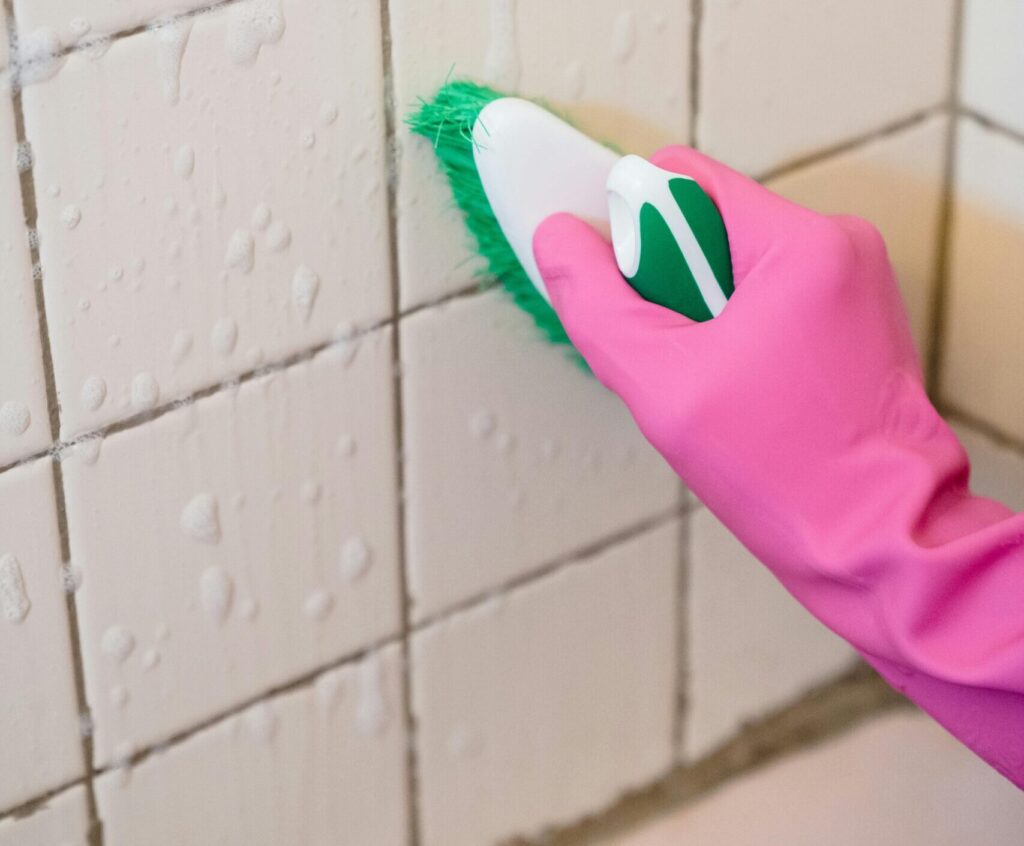
Natural Stone Floors
Natural stone flooring requires a mild, non-acidic cleaner to avoid damaging the material. Avoid harsh chemicals or abrasive tools that could scratch or dull the stone’s surface.
Vinyl Flooring
Vinyl is a popular choice for wet rooms due to its waterproof nature and ease of maintenance. Clean it with a mild detergent and warm water, avoiding abrasive scrubbers that could damage the surface.
Resin Flooring
Resin floors are seamless and non-porous, making them easy to clean. Use a pH-neutral cleaner and a microfibre mop to maintain their appearance without causing damage.
Rubber Flooring
Rubber flooring provides excellent slip resistance and is soft underfoot. Clean it using a mild detergent and warm water, avoiding oil-based or harsh chemical cleaners that could degrade the material over time.
Non-Slip Flooring
Non-slip wet room floors have a textured surface to provide extra grip, which can make traditional mopping challenging. Instead of a standard mop, use a steam mop which effectively lifts dirt without sticking to the floor.
Ongoing Cleaning and Maintenance of Your Wet Room Floor
Keeping your wet room floor in great condition doesn’t require a huge amount of effort, but a few consistent habits can make all the difference in maintaining its cleanliness and preventing long-term issues.
Wipe Down Surfaces Daily
Taking just a couple of minutes to wipe down the floor with disinfectant wipes or grime wipes after use can significantly reduce the build-up of soap scum, grime, and water marks. This quick daily habit helps prevent tougher cleaning jobs later on.
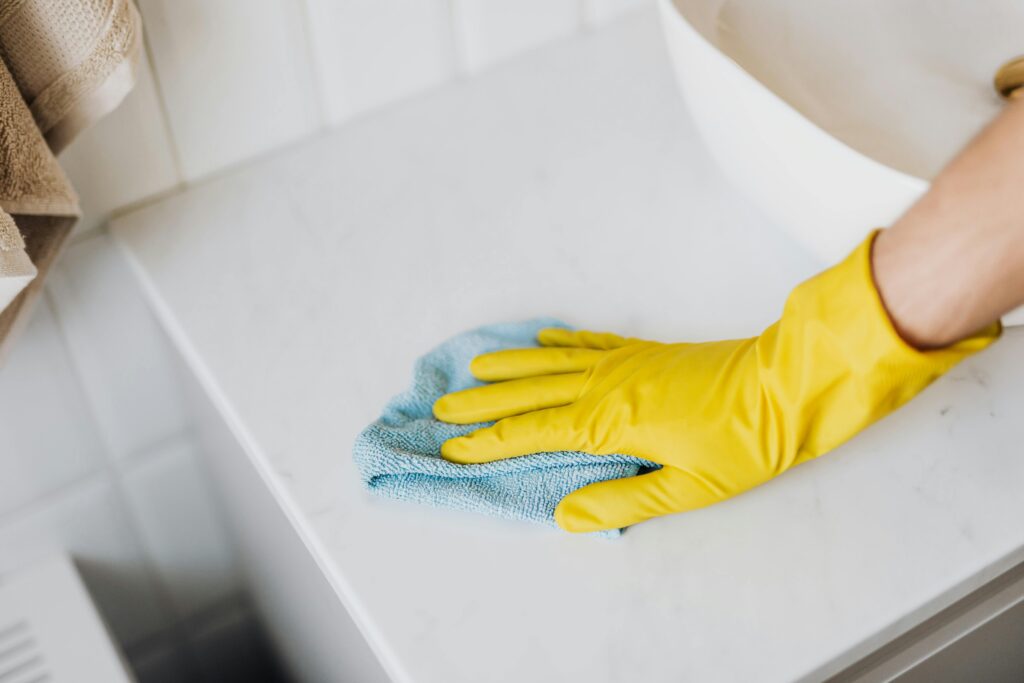
Use a Squeegee
It may seem like a small thing, but running a squeegee over the floor and shower walls after each use can make a huge impact in preventing water marks and mineral build-up. This step removes excess water quickly, helping the floor dry faster and reducing the chances of streaks or residue forming.
Ensure Good Ventilation
Wet rooms are particularly prone to moisture build-up, so keeping the room well-ventilated is key to preventing damp and mould. If you have an extractor fan, make sure it’s switched on during and after showers to pull excess moisture out of the air. Opening a window whenever possible can also help air circulate and dry the space more quickly.
Use Underfloor Heating
If your wet room has underfloor heating, this can be a game-changer in maintaining a dry and clean floor. The heat will help evaporate any lingering moisture after a shower, reducing the risk of water marks, mildew, or mould forming.
Dry Mop After Showers
In addition to using a squeegee, it’s helpful to go over the floor with a dry mop after use. This is especially useful if you don’t have underfloor heating or if you’re trying to prevent water from pooling in certain areas. A quick once-over with a dry mop will keep the floor dry and pristine.
Regular Deep Cleans
Even with daily upkeep, it’s important to do a more thorough clean once a week. This means scrubbing grout lines, cleaning the drain, and giving the entire floor a proper wash with a suitable cleaner for your flooring type. This not only keeps your wet room hygienic but also preserves the condition of the flooring long-term.
Conclusion
Cleaning and maintaining your wet room floor is crucial to keeping it hygienic and looking its best. Regularly using appropriate cleaning products and tools, along with preventing excess moisture build-up, will ensure your wet room remains a safe and pleasant space.
Frequently Asked Questions
What is the best mop for a wet room floor?
A microfibre mop or a steam mop is ideal for wet room floors. Steam mops are particularly effective for non-slip or textured surfaces.
Can you use an oven to dry a wet room floor?
No, using an oven is not practical or safe. Instead, ensure good ventilation or use underfloor heating to speed up drying time.
Should I use a squeegee on my wet room floor?
Yes, using a squeegee after each use will help prevent mineral build-up and keep your floor looking clean and streak-free.
How do I prevent mould in my wet room?
Ensure proper ventilation by using an extractor fan and opening windows. Regular cleaning and drying of the floor will also help prevent mould growth.
Can I use bleach to clean my wet room floor?
It depends on the flooring material. Bleach can damage natural stone, rubber, and vinyl floors. For safer alternatives, use a pH-neutral cleaner or a vinegar and water solution.
How often should I clean my wet room floor?
Ideally, wipe down the floor daily and perform a deep clean once a week to prevent grime and soap scum build-up.


